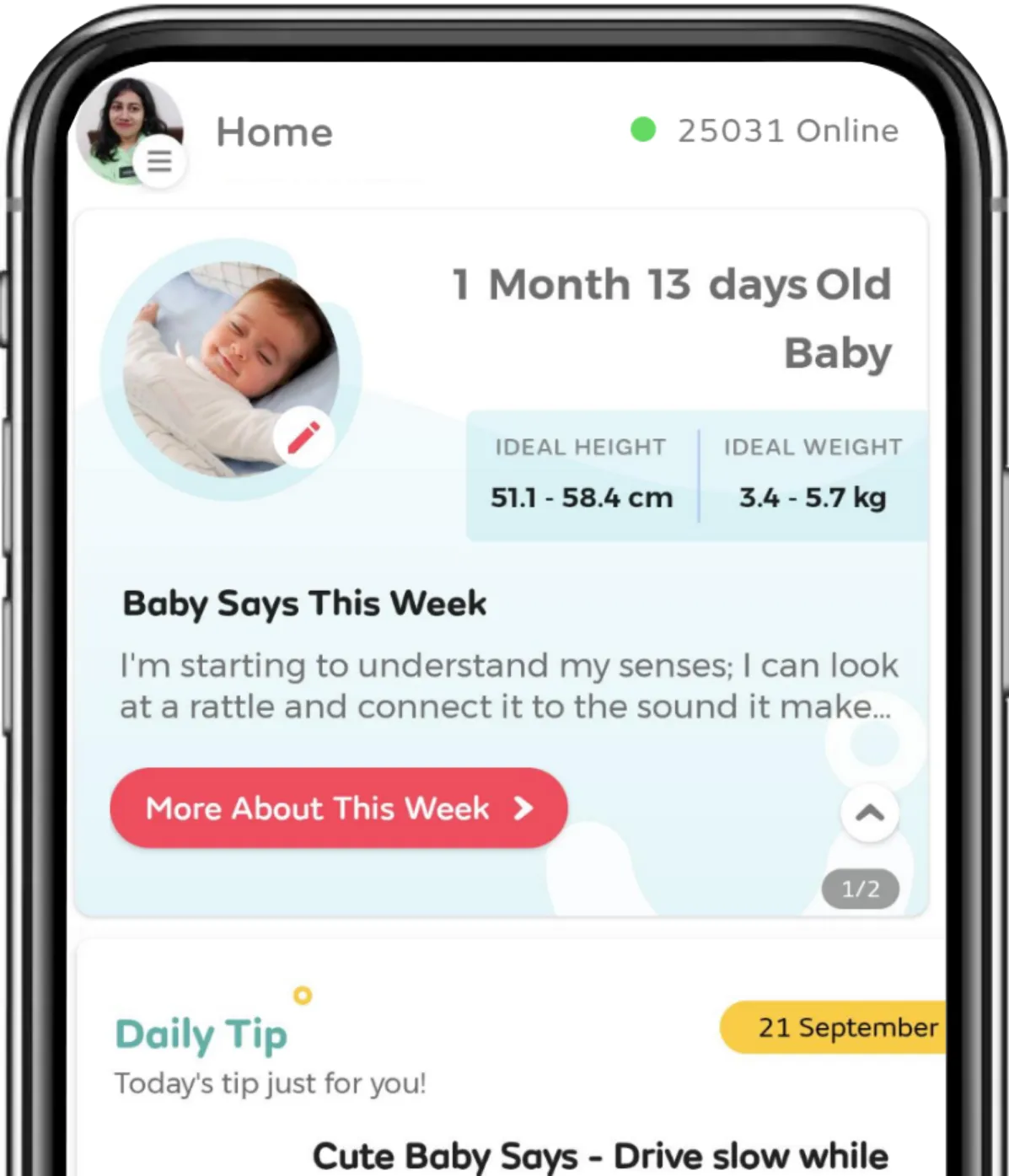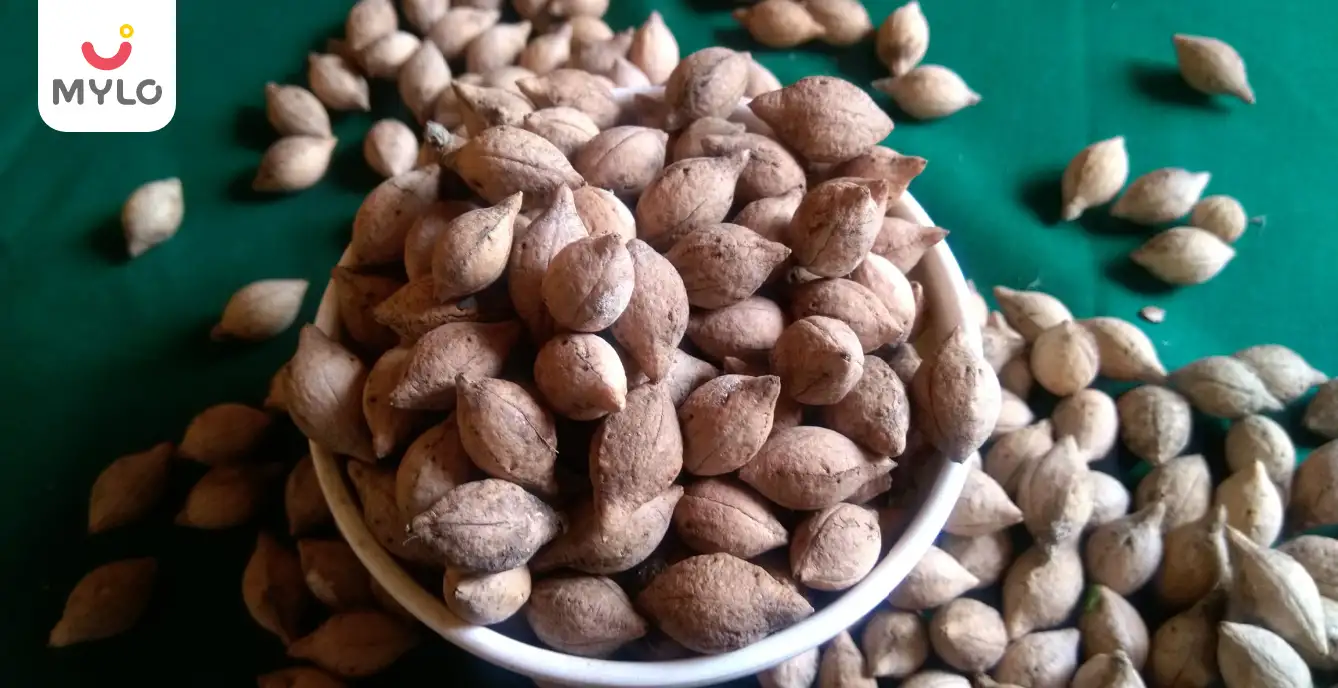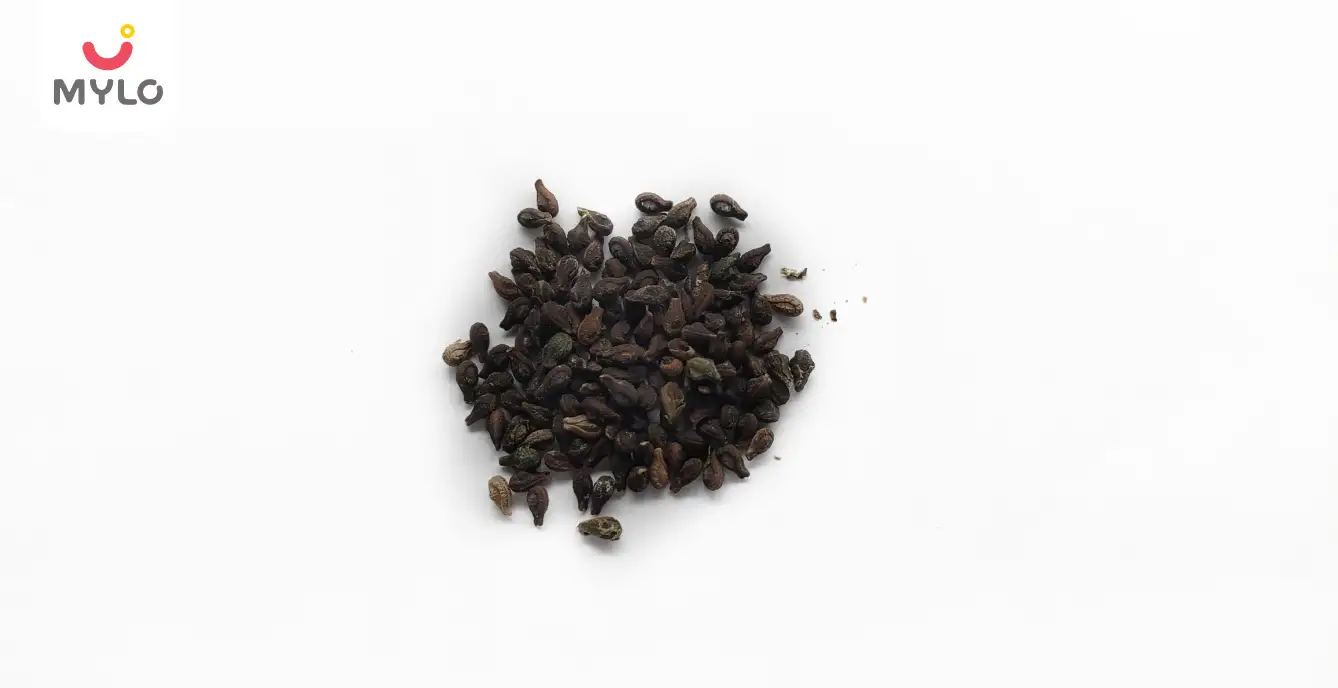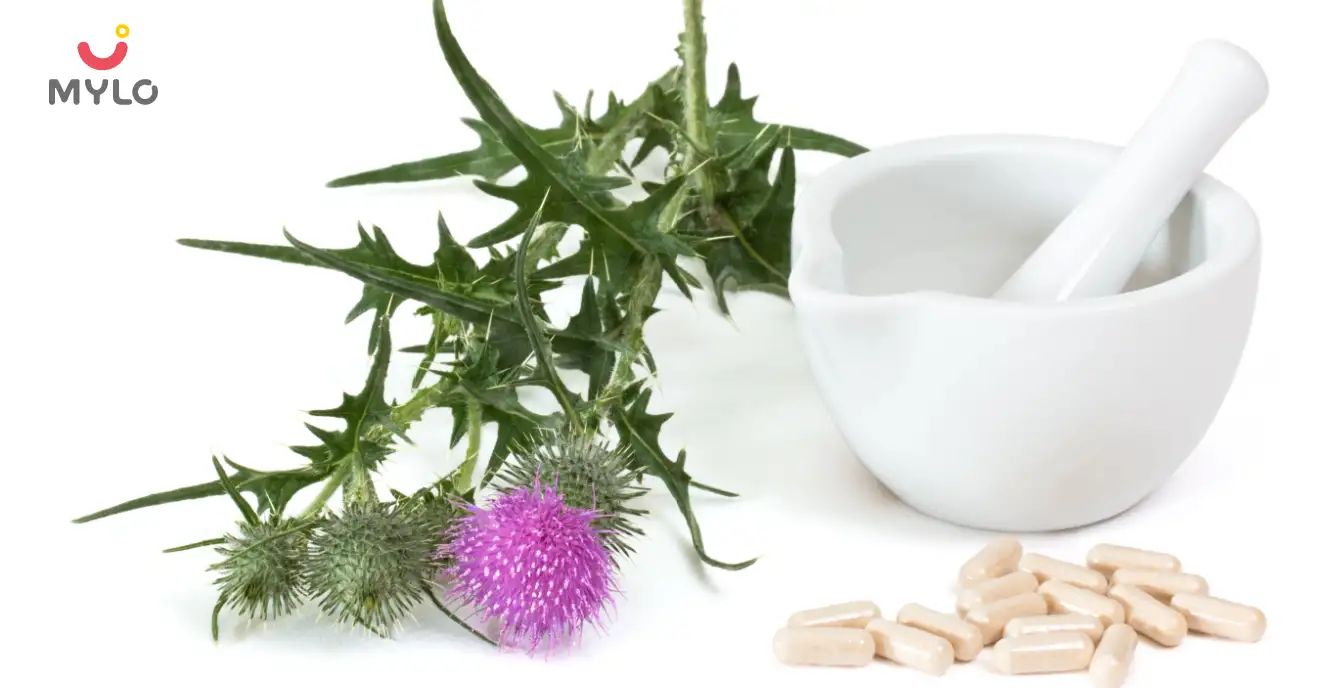Get MYLO APP
Install Mylo app Now and unlock new features
💰 Extra 20% OFF on 1st purchase
🥗 Get Diet Chart for your little one
📈 Track your baby’s growth
👩⚕️ Get daily tips

OR


Article Continues below advertisement
- Home

- Breastfeeding & Lactation

- The Ultimate Guide to Getting a Perfect Latch in Breastfeeding
In this Article
- What is the importance of a good latch in breastfeeding?
- Is there a relation between breastfeeding latch and milk supply?
- Signs of a poor latch
- Basic breastfeeding positioning and latch techniques
- Breastfeeding positions for different stages and situations
- 1. Cradle hold
- 2. Football hold
- 3. Side-lying position
- 4. Laid-back position
- Tips on how to get baby to latch deeper
- Breastfeeding latch tricks
- 1. Flipple technique
- 2. Nipple shield
- 3. Breast support
- 4. Try a different position
- 5. Lactation expert
- Common breastfeeding latch issues and how to troubleshoot them
- Conclusion
- References
Breastfeeding & Lactation
 16223
16223The Ultimate Guide to Getting a Perfect Latch in Breastfeeding
Updated on 13 June 2023



Medically Reviewed by
Dr. Sweta Bajaj
Lactation Consultant, Child Birth Educator, Dentist - BDS Dentist| Certified Lactation and Infant and young child Feeding consultant, Birth educator
View Profile

Breastfeeding is not only a way to nourish your baby but also a way to bond with them. That being said, breastfeeding can be a difficult task for new moms, especially when it comes to getting a good latch. A good latch in breastfeeding is crucial to ensure that your baby is getting enough milk and to prevent discomfort or pain for the mother.
In this article, we will discuss the importance of a good latch, the signs of a poor latch, tips on how to get baby to latch deeper, common breastfeeding latch issues and how to troubleshoot them and some effective breastfeeding latch tricks.
What is the importance of a good latch in breastfeeding?
A good latch means your baby is properly attached to the breast, allowing them to feed effectively and comfortably. A good latch is crucial as it ensures that your baby is getting enough milk, which is essential for their growth and development. A good latch also prevents nipple pain and discomfort, which can be a common problem for new mothers.
Article continues below advertisment
You may also like: How To Feed A Newborn Baby By Breast
Is there a relation between breastfeeding latch and milk supply?
Yes, there is a relation between breastfeeding latch and milk supply. A good latch ensures that your baby is properly attached to your breast, allowing them to effectively and comfortably feed, which stimulates milk production.
A poor latch can lead to inadequate milk supply, which can be detrimental to your baby's growth and development.
Signs of a poor latch
A poor latch can be identified by various signs, including:
- Baby's mouth is not wide open while feeding
- Baby is only sucking on the nipple instead of the areola
- Mother experiences pain or discomfort during feeding
- Baby is not gaining enough weight
- Baby is not producing enough wet diapers
If you notice any of these signs, it's important to work on improving your baby's latch.
Article continues below advertisment
You may also like: How to Increase Newborn Baby's Weight?
Basic breastfeeding positioning and latch techniques
There are a few basic breastfeeding positioning and latch techniques that can help you achieve a good latch:
- Sit in a comfortable position with your back supported
- Hold your baby close to your body with their ear, shoulder, and hip in a straight line
- Tilt your baby's head back slightly
- Wait for your baby to open their mouth wide
- Bring your baby to your breast, making sure their mouth covers the areola and not just the nipple
- Allow your baby to nurse as long as they want on one breast before switching to the other side
You may also like: The Ultimate Guide to Breastfeeding Your Baby for the Entire First Year
Breastfeeding positions for different stages and situations
There are various breastfeeding positions that you can try depending on your baby's age and the situation you're in:
1. Cradle hold
Hold the baby in the crook of your arm, with their head resting in the bend of the elbow. The baby should be lying on their side facing the mother's chest, with their nose level with the nipple. It is suitable for newborns and younger babies.
Article continues below advertisment
2. Football hold
In this position, the baby is held on the side of the body with their legs tucked under the mother's arm. It is good for mothers who had a C-section or have larger breasts.
3. Side-lying position
To get into this position, you should lie on your side with your baby facing you, and your baby's head should be level with your nipple. It is ideal for night-time feedings.
4. Laid-back position
This position involves reclining back in a comfortable position, with your baby lying on their stomach on top of you. It is helpful for babies who have trouble latching.
Tips on how to get baby to latch deeper
If you're having trouble getting your baby to latch in breastfeeding, try these tips:
- Wait for your baby to open their mouth wide before latching
- Support your breast with your hand and compress it slightly to help your baby get a larger mouthful
- Hold your baby in a football hold position, which can help with latching
- Try different breastfeeding positions to find what works best for you and your baby
- Use a breastfeeding pillow to support your baby and make them more comfortable
You may also like: Importance and Benefits of Breastfeeding for Both Mom and Baby
Article continues below advertisment
Breastfeeding latch tricks
Here are five breastfeeding latch tricks that may help you achieve a good latch:
1. Flipple technique
Try the "flipple" technique, which involves flipping your baby's upper lip out and down before latching them onto your breast.
2. Nipple shield
Use a nipple shield to help your baby latch if they're having trouble. A nipple shield can hold the nipple in an extended position, which makes it easier for the baby to latch on to the breast.
3. Breast support
Place a rolled-up towel or receiving blanket under your breast to support it and make it easier for your baby to latch.
4. Try a different position
Sometimes, trying a different breastfeeding position can help you to find what works best for you and your baby.
Article continues below advertisment
5. Lactation expert
If you're having trouble with getting the right latch in breastfeeding, then you can also seek help from a lactation consultant.
Common breastfeeding latch issues and how to troubleshoot them
Some common breastfeeding latch issues include:
- Nipple pain or discomfort
- Engorgement
- Blocked milk ducts
- Mastitis
To troubleshoot these issues, try:
- Adjusting your baby's latch
- Using warm compresses on your breasts
- Massaging your breasts to loosen any blocked ducts
- Seeking medical attention if the issue persists or worsens
Conclusion
Breastfeeding can be a challenging task. But with the right techniques and support, you can achieve a good latch in breastfeeding and make the experience as comfortable as possible for you and your baby. Remember to be patient and seek help if you're having trouble with breastfeeding. A good latch is crucial for your baby's growth and development, and it can also help you form a strong bond with your little one.
Article continues below advertisment
References
1. Goyal RC, Banginwar AS, Ziyo F, Toweir AA. (2011). Breastfeeding practices: Positioning, attachment (latch-on) and effective suckling - A hospital-based study in Libya. J Family Community Med.
2. Joshi H, Magon P, Raina S. (2016). Effect of mother-infant pair's latch-on position on child's health: A lesson for nursing care. J Family Med Prim Care.





Medically Reviewed by
Dr. Sweta Bajaj
Lactation Consultant, Child Birth Educator, Dentist - BDS Dentist| Certified Lactation and Infant and young child Feeding consultant, Birth educator
View Profile


Written by
Ravish Goyal
Official account of Mylo Editor
Read MoreGet baby's diet chart, and growth tips

Related Articles
Understanding RSV And Its Long-Term Impact On Lung Health In Preterm Infants
Preventing Respiratory Syncytial Virus (RSV) In Preemies: Essential Steps For New Parents
How Respiratory Syncytial Virus (RSV) Impacts Premature Babies Differently: What Every Parent Needs To Know
Adverbs: A Comprehensive Guide to help small children learn the usage of adverbs
Related Topics
RECENTLY PUBLISHED ARTICLES
our most recent articles

Ayurveda & Homeopathy
Putrajeevak Beej: The Ancient Seed for Modern Health and Fertility
(2,166 Views)

Fertility
Shivlingi Beej: The Ultimate Guide to Boosting Your Fertility Naturally
(5,675 Views)

Ayurveda & Homeopathy
Milk Thistle in Ayurveda: Unlock The Healing Potential and Health Benefits of This Herb
(991 Views)

Medical Procedures
Orchidopexy: All You Need to Know About Its Procedure, Risks, and Recovery
(666 Views)

Reproductive health
Transvaginal Ultrasound: A Non-Invasive Tool for Early Detection of Reproductive Health Issues
(640 Views)

Diet & Nutrition
New Mom Diet Plan – Month 11 Week 42
(9,783 Views)
- Ejaculatory Duct Obstruction: How It Affects Male Fertility and What You Can Do About It
- Testicular Ultrasound: What You Need to Know About the Procedure and Its Benefits
- Symptoms of Low AMH to Watch Out For: A Health Alert for Women Trying to Conceive
- Hysteroscopy: Everything You Need to Know About This Minimally Invasive Procedure
- Dalchini: How This Herb Can Make Way From Your Spice Rack to Your Medicine Cabinet
- Fenugreek Powder: Health Benefits of Fenugreek From Your Kitchen to Your Medicine Cabinet
- Moringa Powder: The Superfood You Need in Your Diet for a Healthy Lifestyle
- Genital Herpes: Causes, Symptoms, Risks & Treatment
- Ashokarishta: All You Need to Know About This Miracle Tonic for Women
- 10 Amazon Prime Movies to Look Forward to in 2023
- 10 Best Netflix Movies to Watch Out For in 2023
- Fertility Yoga: A Natural Solution to Boost Your Chances of Conception
- How to Get Regular Periods Naturally: Ayurvedic Herbs, Lifestyle Changes & Homeopathy
- Lodhra: The Wonder Herb for Women's Health


AWARDS AND RECOGNITION
Mylo wins Forbes D2C Disruptor award
Mylo wins The Economic Times Promising Brands 2022
AS SEEN IN
















At Mylo, we help young parents raise happy and healthy families with our innovative new-age solutions:
- Mylo Care: Effective and science-backed personal care and wellness solutions for a joyful you.
- Mylo Baby: Science-backed, gentle and effective personal care & hygiene range for your little one.
- Mylo Community: Trusted and empathetic community of 10mn+ parents and experts.
Product Categories
baby carrier | baby soap | baby wipes | stretch marks cream | baby cream | baby shampoo | baby massage oil | baby hair oil | stretch marks oil | baby body wash | baby powder | baby lotion | diaper rash cream | newborn diapers | teether | baby kajal | baby diapers | cloth diapers |











